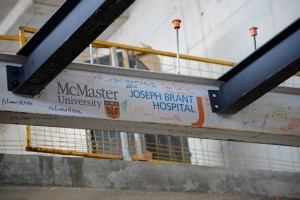 By Staff
By Staff
December 9, 2014
BURLINGTON, ON.
It is a tradition in the provincial legislature for one member to congratulate another when they make their “maiden speech” at Queen`s Park. Monday morning Norm Miller, member for Parry Sound said “These are always special speeches, because you learn so much about the member’s family and what brought them to the Legislature.
“I’ve learned a few things today. The member’s mother was born in Glasgow, as my mother was born in Glasgow, and that she comes from a large family—the youngest of a large family. She certainly has a very close relationship with her mother.
“She also thanked the past member for Burlington for her work. I know that Jane McKenna has been out to some community events, and she says how nice you have been to her at those events.
“Congratulations on your maiden speech” said Miller
And with that Burlington`s first Liberal member of the legislature in more than 70 years stood up to give her first full speech
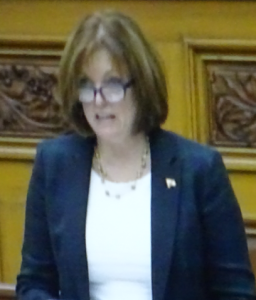
Burlington MPP Eleanor McMahon delivering her inaugural speech in the legislature.
Ms. Eleanor McMahon: Thank you, Mr. Speaker. I believe you will find that we have unanimous consent to allow me to deliver my inaugural address during debate on this bill today.
The Acting Speaker (Mr. Ted Arnott): The member for Burlington is seeking unanimous consent to deliver her maiden, or inaugural, speech in this House. Agreed? Agreed.
The member for Burlington.
Ms. Eleanor McMahon: Thank you, Mr. Speaker. I’m pleased to rise and join the Minister of Natural Resources and Forestry in speaking in support of Bill 37, the proposed Invasive Species Act. This proposed legislation would address a serious threat to our province. Indeed, close to my home in the riding of Burlington, the Cootes to Escarpment is the perfect example, a precious tract of land that contains more indigenous species than any other area of Canada, a number of them species at risk. Bill 37 will protect areas like the Cootes to Escarpment.
Invasive species cause significant damage to the natural environment, which results in significant ecological, economic and social costs, as the minister outlined. This is the case within Ontario, across Canada and internationally. Invasive species move into ecosystems and take over, killing or crowding out some native species. Invasive species disrupt food webs, degrade habitat, introduce parasites and disease, and lead to species becoming at risk. Globally, only habitat loss is a bigger threat to biodiversity.

McMahon wants to ensure that invasive species do not get into Cootes paradise.
Mr. Speaker, on a global basis, invasive species costs are estimated to be $1.4 trillion. That’s the equivalent of 5% of the global GDP and seven times the cost of natural disasters. Industries like fishing, hunting, forestry, tourism and agriculture can all be negatively affected by invasive species. In the Great Lakes basin, invasive species foul water intakes, reduce the value of commercial and recreational fisheries and reduce property values. Every year, invasive plants cost the agriculture and forest industries in Canada about $7.3 billion.
All invasive species pose some risk; however, some species pose a bigger threat than others. The members of this Legislature will be familiar with the Asian carp, which have damaged the ecosystems of many American lakes and rivers. There are actually four species of Asian carp: bighead, silver, grass and black carp. Our greatest concerns are bighead and silver carp, which have spread the most aggressively in the United States. They are considered one of the greatest threats to our Great Lakes.
Asian carp are voracious consumers. They eat up to 20% of their body weight each day. Everywhere they go, they eat the food supply that native fish depend on, and they crowd native species out of their habitat. The decline of native fish species could damage sport and commercial fishing right here in Ontario. Currently, there are no established populations—thank goodness—of Asian carp in Ontario waters. Preventing Asian carp from spreading in the Great Lakes is the best way to prevent harm to Ontario’s native fish species.
Another species that has not yet entered Ontario is the mountain pine beetle. In British Columbia, it has destroyed millions of hectares of pine trees. Reports have predicted that climate change, a major underlying cause of the proliferation of invasive species, may allow the beetles to spread north and east. The cost of fighting the mountain pine beetle is staggering. Since 2001, the BC government has spent close to a billion dollars fighting this one insect.
Invasive plants may not be as well known, but they are also a serious threat. One of them, hydrilla, is considered one of the world’s worst aquatic invaders. It can grow up to 2.5 centimetres a day, resulting in extremely dense growth that impacts boaters and swimmers. Hydrilla has not yet been detected in Canada, but it has spread rapidly throughout the United States. It is highly adaptable and thrives in many different kinds of aquatic environments.
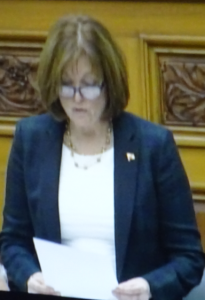
The Inaugural speech was detailed focused and on an issue that is important to Burlington.
Asian carp, the mountain pine beetle and hydrilla aren’t yet established in Ontario, as I mentioned, but we are managing many invasive species that have become established here.
Some invasive species can be a threat to human health. One example is the giant hogweed, a plant introduced from Asia. Its toxic sap can cause painful burning blisters on the skin when exposed to sunlight. In addition to that threat, this plant can spread readily and shade out native plants, which can have an impact on our biodiversity.
Another invasive species that is already established in Ontario is the round goby. It is a small, bottom-dwelling fish that feeds aggressively on fish eggs, larvae and other small organisms found on lake and river bottoms. In less than a decade, the round goby has spread through all five of our Great Lakes and begun to invade inland waters. The round goby’s aggressive eating habits and ability to spawn several times each season have helped them multiply and spread quickly. In fact, in some areas, the fish has reached densities of more than 100 fish per square metre. Round goby have reduced populations of sport fish and threaten several species at risk in our Great Lakes basin.
There is no question that the threat of invasive species is real and significant.
Managing the threat of invasive species is challenging and complex. It requires a coordinated approach. Indeed, managing invasive species has always been a collaborative effort across all levels of government as well as with industry, environmental groups and the public.
Ontario plans to continue to collaborate with all of those involved in invasive species management, including the federal government, which has an important national role to play in invasive species management. Indeed, I want to be clear: Our proposed Invasive Species Act is intended to complement the role of the federal government, not duplicate or take over their responsibility. The proposed Invasive Species Act will enable Ontario to use its own framework to determine an appropriate course of action.
Preventing invasive species from arriving and becoming established in Ontario is critical in our fight against this growing threat. Evidence has shown that the costs of preventing invasive species from  becoming established through taking immediate action are generally much lower than the costs of controlling an established invasive species. Like so many things, an ounce of prevention is worth a pound of cure.
becoming established through taking immediate action are generally much lower than the costs of controlling an established invasive species. Like so many things, an ounce of prevention is worth a pound of cure.
We know that there may be many circumstances that arise where immediate and urgent action is required to eliminate or reduce the spread of an invasive species. This could happen if a new invasive species is found in Ontario or an existing invasive species is found in a new area of the province. The proposed legislation will help by allowing the government to intervene earlier and enable rapid response actions. This could include working with partners to stop an invasive species from spreading: for example, by preventing or restricting the movement of contaminated firewood.
Mr. Speaker, as I noted earlier, addressing the threat of invasive species is a collaborative effort. I would like to take a few minutes to highlight a few of the many enduring partnerships our government has built in the area of invasive species management and education. We place tremendous value on these relationships, and I would like to take this opportunity to thank all of our ministry stakeholders for their valuable advice and for giving of their time and talents to enrich our public policy work as a government. Ontario works with the Great Lakes states and the US and Canadian governments to prevent aquatic invasive species, such as Asian carp, from entering the Great Lakes. Indeed, there is a federal office in my riding of Burlington which is doing extensive work in this area.
 We have been working with the Ontario Federation of Anglers and Hunters for more than two decades to deliver the Invading Species Awareness Program. The program raises awareness of the threat of invasive species to Ontario’s biodiversity. It engages the public in preventing and controlling the spread, and monitoring the distribution, of invasive species. This program also operates the Invading Species Hotline to give the public an avenue to report sightings, seek information and request educational material on invasive species.
We have been working with the Ontario Federation of Anglers and Hunters for more than two decades to deliver the Invading Species Awareness Program. The program raises awareness of the threat of invasive species to Ontario’s biodiversity. It engages the public in preventing and controlling the spread, and monitoring the distribution, of invasive species. This program also operates the Invading Species Hotline to give the public an avenue to report sightings, seek information and request educational material on invasive species.
More recently, we established the Invasive Species Centre in Sault Ste. Marie to work with the federal government and other partners to address invasive forest and aquatic species and invasive plants. Ontario has provided approximately $9.7 million towards the establishment and operation of this centre.
Partnerships such as these are helping us to protect our natural environment and industries that contribute thousands of jobs to our economy. One example is recreational fishing, an industry that contributes about $2.2 billion to Ontario’s economy and is also a notable contributor to our tourism industry. Ontario will continue to collaborate and work with these partners and, if passed, the proposed Invasive Species Act could help us expand the use of strategic partnerships.
The proposed act would provide the minister with authority to enter into agreements to help us prevent, detect, control and eradicate invasive species. As such, the legislation will provide us with the tools we need to protect our environment and our economy. Under the proposed act, regulations could be made to prohibit certain activities to help prevent the spread of an invasive species. Agreements could identify exemptions that would be necessary to achieve desired outcomes. For example, an agreement with a local conservation partner could allow the partner to undertake a program to control species such as garlic mustard. The partner would be able to possess the plant during the control activities and then dispose of it properly.
As I said earlier, managing invasive species is a responsibility shared with other governments, industry, environmental groups and the public. In fact, Ontarians can report sightings of invasive species to help us detect new ones and monitor the spread of those that are more established.
We can all play a role in protecting Ontario’s biodiversity. How can we do this? By planting non-invasive species in gardens, by never releasing bait or any wildlife into nature, by washing our boats before moving them to another body of water, and by buying firewood locally and leaving what we don’t use.
We need to engage all Ontarians in doing their part to protect species and habitats, and as policy-makers, we need to do our part as well, by taking a leadership role with this proposed legislation. The proposed Invasive Species Act would help limit the social and economic impacts of invasive species by preventing them from becoming established, controlling their spread once they are here, and eradicating them if possible. As such, I would encourage all members of this House to support this critical legislation. I look forward to today’s discussion and the debate to come.
In the meantime, it is my honour and pleasure to stand in this House and spend some time talking about my journey to public life, to talk about what I hope to accomplish and bring to public service during my time here and thank the people who have helped me along the way.
It is worth noting that in strict terms this is my inaugural speech, Mr. Speaker, and that I have already had the honour and privilege of speaking on a number of occasions, to items that are not just of local interest and concern to the people of my riding of Burlington, but to Ontarians as well.
I must say that I am rather glad to have had these two months to begin to become accustomed to this historic and storied place and the work that we do here. As such, I can now look back on the past few months with a bit of perspective and experience.
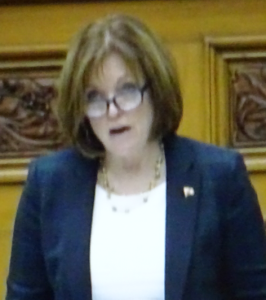
Inaugural speech was lengthy; McMahon was certain her Mother Marie was watching.
If this speech were to have a theme, I would say that it is gratitude. There are many people to thank and many things to be grateful for. Let me begin by thanking the people of Burlington for the confidence they expressed in me on June 12. I am humbled by that confidence, and I look forward to serving them in this place, and to working with them towards improving the quality of life of all of the people in our beautiful city.
It is an honour and a privilege to have this opportunity to make a difference in people’s lives, to be entrusted with their hopes and dreams, as well as their challenges. I’m grateful to have the chance to work on behalf of such an extraordinary community, and with such kind and generous people.
I would like to take a moment to offer a sincere thank-you to my predecessor, Jane McKenna, for her sacrifices and service in representing the riding of Burlington since 2011.
Applause.
Ms. Eleanor McMahon: Yes. Since my election, I have come to know what Jane knew during her three years of able service here: The hours are long, the time away from family significant. Thank you, Jane, for representing Burlington in this place so ably.
On our first day of orientation, we were reminded that, of the 13 million people who call Ontario home, we are but 107. “How fortunate am I?” I thought, and I know that many of my colleagues feel the same. We came here with a sense of purpose and excitement, and with a desire to serve.
My colleague the Honourable Ted McMeekin is fond of quoting Bobby Kennedy. Ted volunteered for Bobby on one of his campaigns, and he heard him say about his passion for making change: “Don’t get mad, don’t get even—get elected.” I think that call to action embodies the desire that most of us have here to make a difference in the lives of the people we serve, to work as diligently as we can on their behalf and to do so with a listening ear and an open heart.
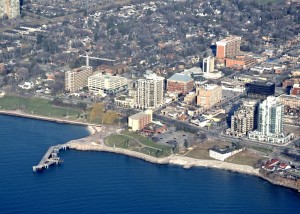
McMahon and her late husband decided that Burlington would be home for them. She told the members of the legislature that Burlington was the most beautiful city in the province. Her speech almost turned into a debate.
Let me talk for just a minute, if I may, about another reason I’m grateful to the people of Burlington. I am not from Burlington. I was born in Windsor, Ontario. I came to Burlington in 2005. My late husband and I chose Burlington. He was an OPP officer, and to a certain degree we had a choice of where we wanted to live in the GTHA. We chose Burlington for its beauty and for its people, and for our families. My brother and his wife have called Burlington home for over 20 years. During that time, as a result of numerous visits, we fell in love with Burlington and decided to settle there, which we did in the summer of 2005.
Since that time, my affection and my ties to the community have deepened. Burlington has been very good to me, and I’d like to thank my friends and my community for their warm embrace. Since becoming your MPP, your kindness and your graciousness have been nothing short of overwhelming. I’m grateful to you for making this native of Windsor feel right at home in Burlington.
I can honestly say that there is no more beautiful place to live in our province than Burlington. I’m delighted to have this opportunity—
Interjections.
Ms. Eleanor McMahon: That may be a moment of debate.
I’m grateful to have this opportunity to thank everyone who helped me during the election campaign this past June. To our extraordinary volunteers, our wonderful staff—most especially, our dedicated campaign manager—our generous donors, and to the members of the Burlington Riding Association, the words “thank you” don’t seem quite enough. Your support and your encouragement, your confidence expressed in me as your candidate, your kind words of comfort when I needed it most—for all of this and so much more, thank you from the bottom of my heart.
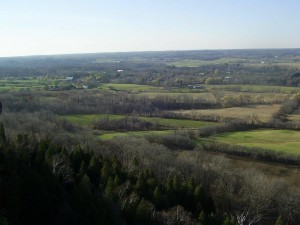
Parts of Burlington that McMahon loves to cycle through.
Your support for me helped me during the election campaign, and it will serve to guide me in my work as the first Liberal in Burlington in 71 years. Our celebration on election night was one I shall never forget, and nothing short of extraordinary. Thank you for being there for me.
Perhaps most memorable was the presence of my family on election night. It has been said, and it’s true, that to do this job truly requires a support network unlike any other. I am truly blessed with an extraordinary group of siblings, their spouses, and my nieces and nephews.
Most of all, I was proud of the fact that my mother, Marie McMahon, was there with me. When we learned that I had won, we were standing in the foyer of my brother’s home. In an exchange I will never forget, my mother turned to me and said, “Your dad would be so proud.” It was a touching moment, to be sure, but it brought home to me, as indeed did my decision to run, that I was truly fortunate to have been raised by two extraordinary people, who taught my brothers and sisters and I about the true meaning of working hard, giving back and community service.
My dad, Hugh McMahon, died in 1994 of cancer. Dad worked hard all his life. His family was his greatest joy. His own childhood was marked by challenging moments, from growing up during the Depression, to the start of the Second World War. Dad enlisted in the Canadian army at the age of 16; he lied about his age. He went overseas and served his country as part of the Canadian First Regiment. He landed in Sicily, saw action during the Italian campaign and later took part in the liberation of Holland.
A proud moment for me came in 2007 while attending, with an official delegation from Burlington city hall, the city of Apeldoorn, one of Burlington’s twin cities. We visited the Canadian War Cemetery in Nijmegen. A number of soldiers from my father’s unit are buried there, and his regimental crest is in the Apeldoorn city hall.
Dad returned to Canada after the war and married my mother, Marie, in 1948. He attended university briefly in Toronto and returned to Windsor, where he worked at Chrysler until 1981. Seven children followed, as did a life of community service in the militia and with many local organizations.
My mother, who I think is watching today, is a shining light for me. Mum will be 89 on Thursday. She was born in Glasgow and grew up in Windsor. A pioneer in so many ways and a strong believer in education, Mum attended Assumption University, then part of the University of Windsor. She got a science degree and served as a laboratory technologist at Windsor’s Grace Hospital for most of her career.
She and Dad both felt very strongly that education provided a gateway of opportunity, and they encouraged us in every way possible. Mum was adamant, too, that as women—there were five of us girls—we must have our independence, our own income and the ability to make our own decisions.
Mum is tiny in stature but mighty in every other sense of the word. Her love for her children, her care and concern for others and her utter selflessness have shaped my life in amazing ways. I would not be standing here today without her.
To you, Mum, I offer my undying love and thanks. Thank you for making me feel like I could do anything. Thank you for always being there for me, and for your wisdom and your friendship.
To my siblings: I’m truly grateful to you for your encouragement and support. I am so lucky to have such a tremendous group of ardent supporters and cheerleaders. As the youngest of all of you, I have benefited from your wisdom—and your mistakes—your advice, your terrific humour and your wit. You offer me a hand up when I need it, and no request is too much. When I told you I wanted to run, you were worried about the rigours of the debate and the demands of the job. After dutifully expressing your concerns to your younger sister, you were there from day one. Thank you all.
Earlier, I spoke of my parents as people who inspired me to public service. I grew up in a house where the mantra was, “To whom much is given, much is expected.” Speaking of my mother, I should add that her personal commitment to her family and her community was recently recognized. Mum recently got a volunteer award from Hospice Windsor in recognition of her 30 years of service as a volunteer.
Applause.
Ms. Eleanor McMahon: Yes. Thank you.
Every Thursday Mum cooks lunch with her friend for the past 70-plus years, Mabel Gagnier, for hospice patients and their families. I know that Mum is loved by her hospice family, but I know too, because she’s told me this, that she gets as much out of this experience as she gives. Her stories of people who are in the most difficult and challenging of circumstances serve to bring a necessary perspective to her life and to mine as we reflect on what is important. As you can see, from my mother I learned empathy and compassion.
Speaking earlier this year to the CEO of the Carpenter Hospice in Burlington, I was reflecting on the same theme: the events that shape our lives and the people who inspire us. As we all know, one of the best parts of this job is the opportunity to attend events and meet the wonderful people in your riding. Well, it was very early in my job as an MPP that I truly understood what Burlington is made of, and it is strong stuff indeed.
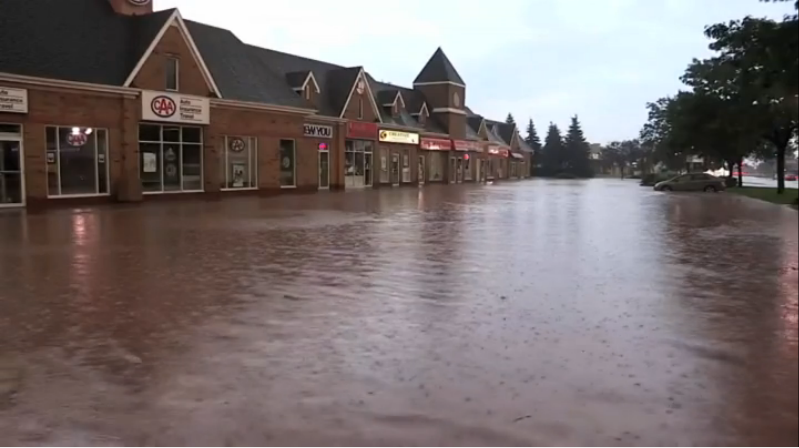
McMahon told her fellow parliamentarians how badly Burlington was flooded last August. She was instrumental in getting funds for the flood victims.
On the evening of August 4, a once-in-100-years storm brought 200 millimetres of rain to Burlington in just six hours. This rain is the equivalent of the amount of precipitation that Burlington would see in July and August together. This devastating storm flooded our streets and people’s homes. A rush of water filled people’s basements and over 3,100 homes were damaged. As the unrelenting rain fell that night, reports began to pour in of flooding on the 407, the QEW, Fairview and New Streets, Brant, Guelph, Walkers Line and Appleby Line; all flooded, our major north-south arterial roads. The water overwhelmed Burlington’s sewage system, which at capacity is built for three million litres an hour. At the height of the storm, this reached 10 million litres.
People’s basements filled in mere moments as creeks overflowed their banks. Visiting devastated homes the next day on Regal Road, among the hardest hit, I met people who fled with their children, their animals and a few precious memories as water filled their basements within minutes. Seeing their anguish, not to mention the contents of their homes on their front lawns, was heart-wrenching.
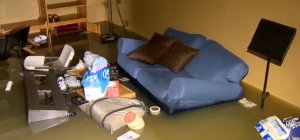
Homes were devastated by the flood. McMahon was out into the community within hours going door to door with the Mayor.
On the 5th, I got on the phone, but many people were calling, too, wondering how they could help. My colleagues were there, and I’d like to thank them. The member from Halton; the Minister of Labour, the member from Oakville, and the Minister of Municipal Affairs and Housing, all in neighbouring ridings, were there, offering a friendly word of advice. Thank you.
Applause.
Ms. Eleanor McMahon: Yes.
But it was the response of our community that was so remarkable. I reached out to the mayor that evening. He was travelling back from his cottage in response to the disaster. His own home was flooded. He hit the ground running the next day, and as we travelled door to door together, it became apparent that greater assistance was needed.
On the night of the flood and in the days that followed, our EMS personnel were extraordinary. Our front-line police officers, firefighters, paramedics—all were there, doing an amazing job rescuing people from their flooded vehicles and responding to those in need.
Later on, with the assistance of the region of Halton, the Red Cross came to our aid and did an extraordinary job quantifying the amount of flooding and the impact on people’s lives. Together we mobilized community support. I called the CEO of United Way, and 72 hours later they had a website portal up and running to collect donations.
The mayor, working with our regional chair, mobilized staff. City and regional staff began the process of responding to those in need and going door to door. As the scope of the disaster became clear, city council met and declared a state of emergency, triggering an Ontario Disaster Relief Assistance Program request.
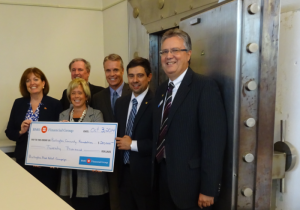
Ron Foxcroft made the phone calls, Collen Mulholland displayed the cheque while McMahon pressed the province to deliver matching funds. The bankers were asked to give up some of the money in their vaults.
On the community side, donations poured in and the community foundation stepped up, offering much-needed volunteer and fundraising support. The CEO of the community foundation, Colleen Mulholland, and her team have done an extraordinary job. Under the chairmanship of Ron Foxcroft, the disaster relief committee has worked hand in hand with the community foundation to raise funds, and to date, I am proud to say that our generous community has contributed close to $1 million to help their neighbours in need.
Indeed, one of the truly wonderful things about Burlington is how generous our community really is. In 2010, 30% of Burlingtonians contributed to a charitable cause, higher than the provincial average of 24.5%.
During the summer, I attended many events which contributed to the flood relief, raising funds and rallying the community, from neighbourhood fundraisers like the Up the Creek event started by some neighbours whose street and homes were flooded—they raised $20,000—to our Rotary Club’s Ribfest event, which raised thousands of dollars as well. There I was, side by side at the door, raising money with buckets, mayor and city Councillors right beside me.
While the scope of the disaster made for a challenging summer for our community, and while much of the hard work remains to be done by the committee as they adjudicate requests for funding, I am proud to say that on November 10, my colleague, the member from Halton, and I announced that our government would be contributing up to $3 million to support Burlington and its flood relief. For a new MPP, this was an extraordinarily proud moment.
Speaker, the election provided me with an excellent opportunity to speak to some of the opportunities and challenges facing our community. During that time and since, I’ve had many conversations about the kind of Burlington we all want now and into the future. Burlington has one of the highest median incomes in Canada and we enjoy an excellent quality of life overall. Still, there are challenges. As the recent Vital Signs report by the Burlington Community Foundation shows, Burlington has one of the oldest populations in the GTHA. While most of our seniors are aging successfully, over 5% of them are living in poverty. More broadly, close to 8% or over 13,000 of our residents in Burlington are living in low-income households. When it comes to housing, access to affordable housing remains a barrier to many.
When it comes to employment, Burlington is doing well, with stronger employment levels than Ontario as a whole. The number of jobs is up 7% and the number of businesses is up 4% since the 2012 employment survey.

Infill housing on what were once half acre single story post war bungalows are now the norm for Burlington.
To maintain this excellent quality of life, I’ve had conversations about how, as a community, we can work together to tackle some of our challenges. Burlington is built out; therein lies another challenge. Our growth will come from infill and density. With growth comes the need for stronger transportation networks. I look forward to working with city hall, our region, local businesses, citizens’ groups and my colleagues in the House on creating transit hubs in Burlington and encouraging the kinds of alternative transportation—cycling and walking—that will make our community more connected and more liveable, and attract investment.
Issues such as food security, investing in our agri-food sector, which is a strong sector locally, and continued investments in health and education will continue to dominate my conversations in the months and years to come and remain areas of strong local focus. In particular, youth and adolescent mental health is another area which is in significant need of focus, as demonstrated again by our community foundation and their work. I’ve also had terrific conversations about how, working together, we can find solutions to these important issues.
On a final note, Mr. Speaker, I started this speech talking about what brought me here and what I hope to accomplish. I want to close my remarks by mentioning someone who’s no longer here but who had and continues to have a very positive impact on my life. On June 6, 2006, my late husband, Greg Stobbart, a veteran OPP officer with 24 years of experience in policing, was killed by a careless driver. Greg died, not in the line of duty, but doing something he loved. We were training for a triathlon. He had recently purchased a new bike, and with a beautiful day beckoning, set out on a training ride from which he never returned. Greg’s tragic death at the age of 44 in a senseless collision was a life-changing event for me, for my family and for his as well. His legacy lives on in me and my desire to continue in this place the work that I started to create a more bicycle-friendly Ontario.

McMahon became a force to be reckoned with in the cycling community and created the Share the Road organization and pushed the province to pass Gregg’s Law
Our response to Greg’s death came on many fronts. First, working with then-Minister of Transportation the Honourable Jim Bradley, we changed the Highway Traffic Act. In 2009, after sustained advocacy, we got Greg’s Law passed, increasing the penalties on suspended drivers based on similar legislation in six other provinces. The man who killed Greg had five convictions for driving under suspension, four convictions for driving with no licence, $15,000 in unpaid fines, and two months after he killed my husband, he hit someone else.
As you can imagine, Mr. Speaker, this instilled in us the importance of focusing on that advocacy and securing those changes to the Highway Traffic Act. Our goal was to prevent others from going through what we did, and we wanted to get those repeat offenders out from behind the wheel and off the road. Greg’s Law became the law of Ontario in October 2009.
Second, we launched the Share the Road Cycling Coalition in Ontario in 2008. Share the Road has become the provincial cycling policy and advocacy organization, representing thousands of local organizations, cyclists, stakeholders and municipal leaders from across Ontario, united in a vision of safer communities for all road users.
In 2012, I had the privilege of sitting on the coroner’s review into cycling deaths in Ontario and secured a recommendation for an Ontario cycling strategy. Together with the Honourable Glen Murray, who was then Minister of Transportation, I launched that strategy, the first of its kind in Ontario in over 20 years, in September 2013, a proud moment.
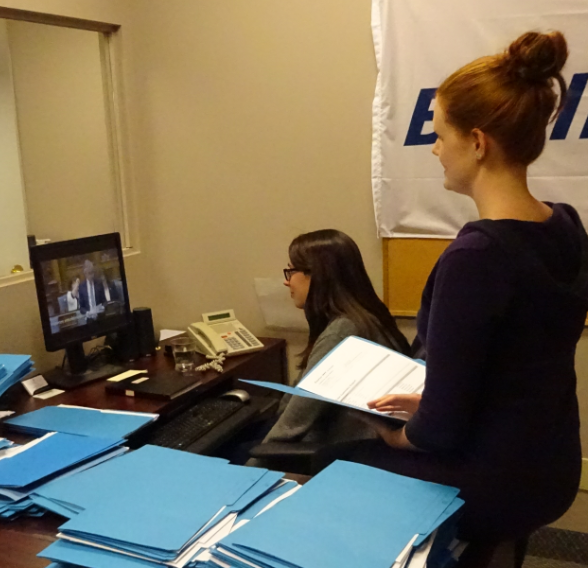
MPP McMahon’s staff watching her inaugural speech on desktop computers.
In Greg’s memory, and in memory of all the cyclists who have been killed and injured, I look forward to continuing the work we started at Share the Road. Together with all members of this House, given the tremendous benefits of cycling, I look forward to making our communities and our province even more bike-friendly in the years to come.
In the interim, Mr. Speaker, I would like to thank you and my colleagues and all the members of this House for their gracious welcome, for your friendship and your support, for this opportunity to share my thoughts with you and for the privilege of being the MPP for Burlington.
Thank you, Mr. Speaker.

 By Staff
By Staff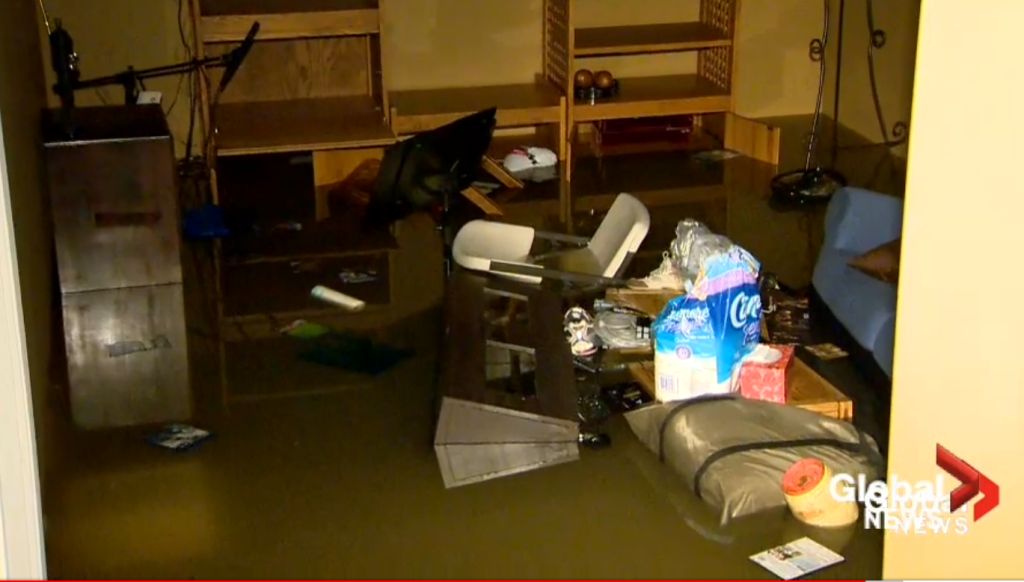
















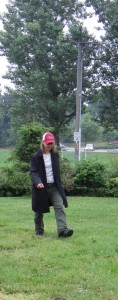
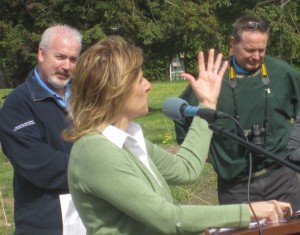






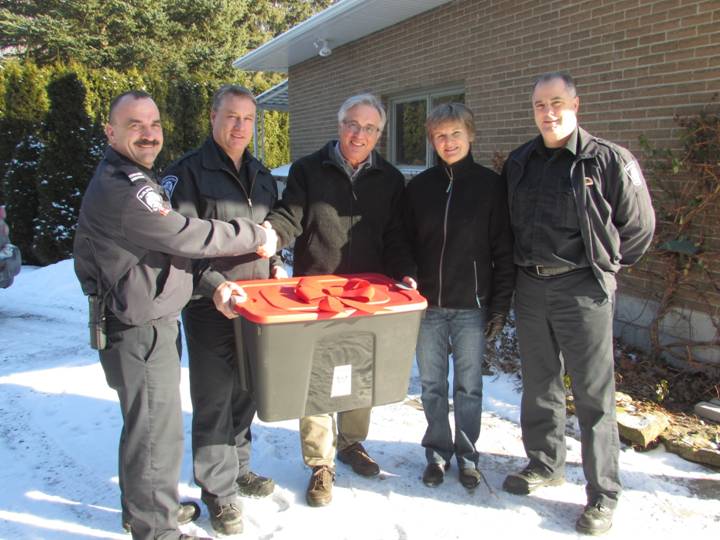
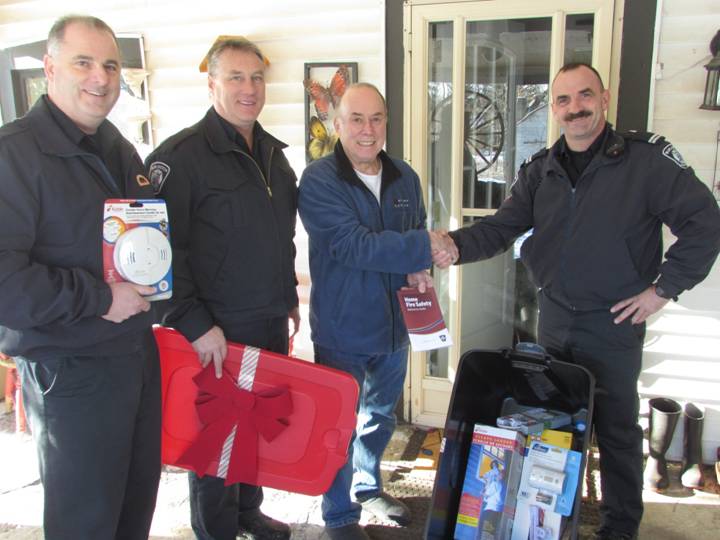
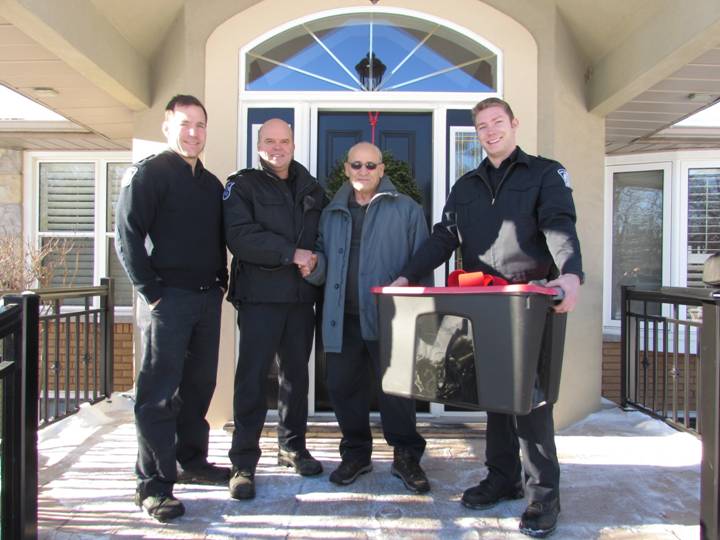

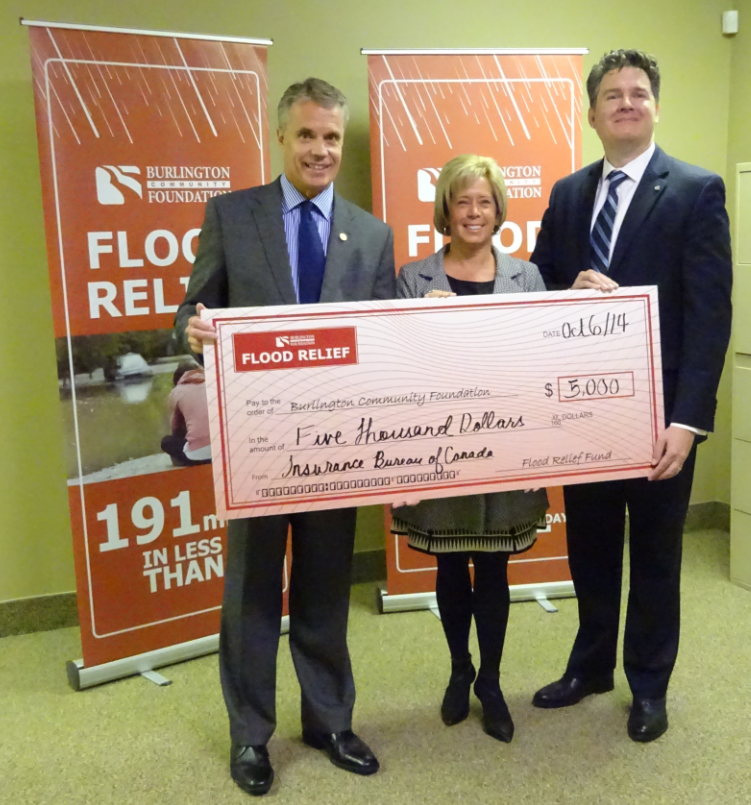
 January 3, from 8:00 am to noon. Book an appointment at 1-888-236-6283
January 3, from 8:00 am to noon. Book an appointment at 1-888-236-6283




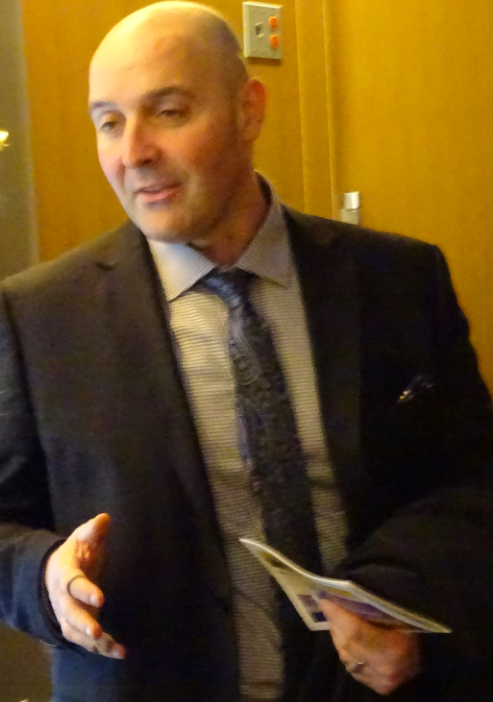


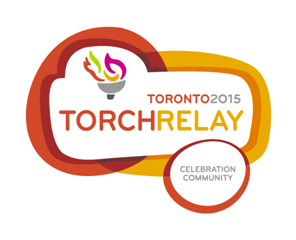 The Burlington Pan Am Community Engagement Committee accepted applications and nominations until December 14th.
The Burlington Pan Am Community Engagement Committee accepted applications and nominations until December 14th. 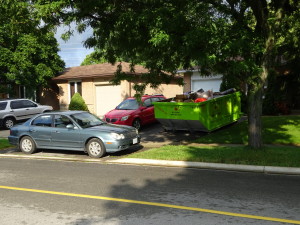
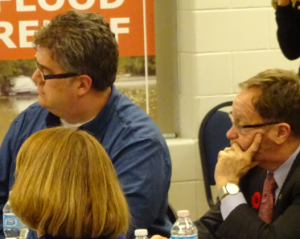



 becoming established through taking immediate action are generally much lower than the costs of controlling an established invasive species. Like so many things, an ounce of prevention is worth a pound of cure.
becoming established through taking immediate action are generally much lower than the costs of controlling an established invasive species. Like so many things, an ounce of prevention is worth a pound of cure. We have been working with the Ontario Federation of Anglers and Hunters for more than two decades to deliver the Invading Species Awareness Program. The program raises awareness of the threat of invasive species to Ontario’s biodiversity. It engages the public in preventing and controlling the spread, and monitoring the distribution, of invasive species. This program also operates the Invading Species Hotline to give the public an avenue to report sightings, seek information and request educational material on invasive species.
We have been working with the Ontario Federation of Anglers and Hunters for more than two decades to deliver the Invading Species Awareness Program. The program raises awareness of the threat of invasive species to Ontario’s biodiversity. It engages the public in preventing and controlling the spread, and monitoring the distribution, of invasive species. This program also operates the Invading Species Hotline to give the public an avenue to report sightings, seek information and request educational material on invasive species.
















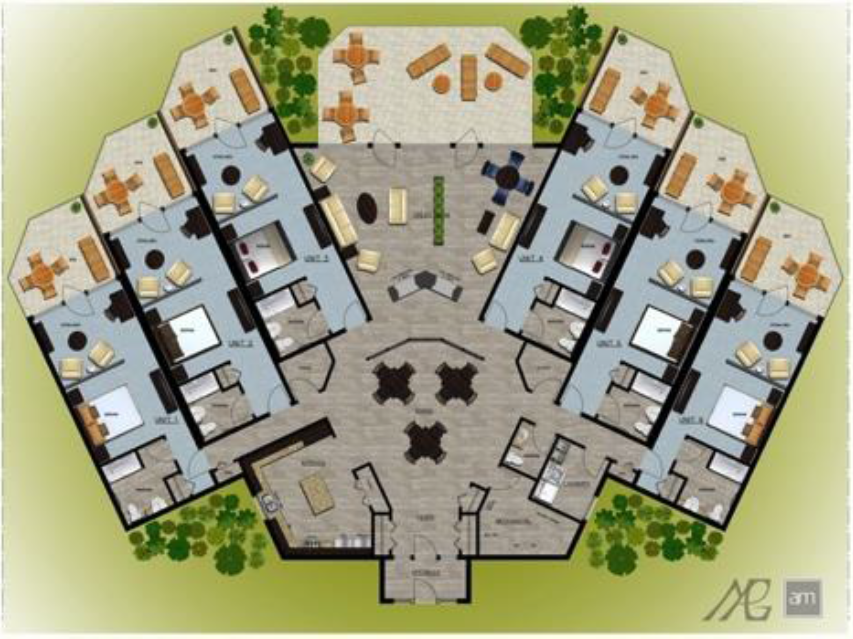

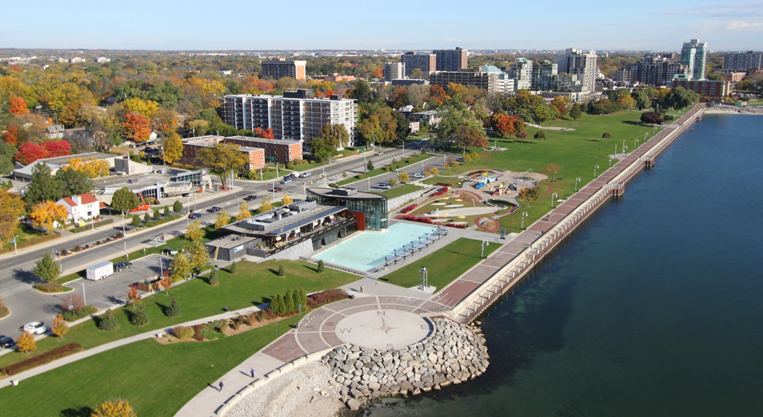
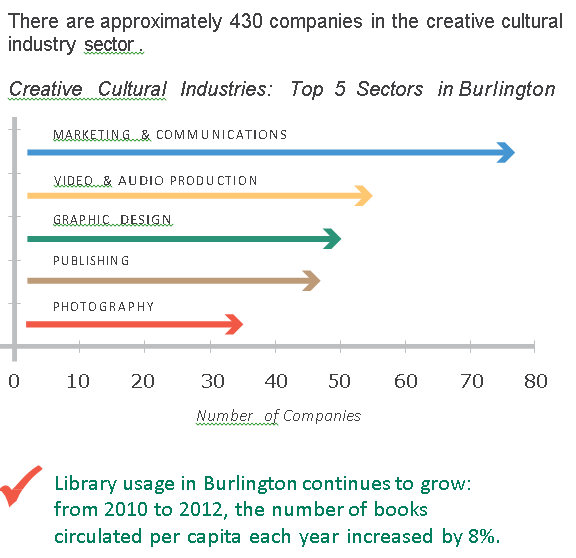
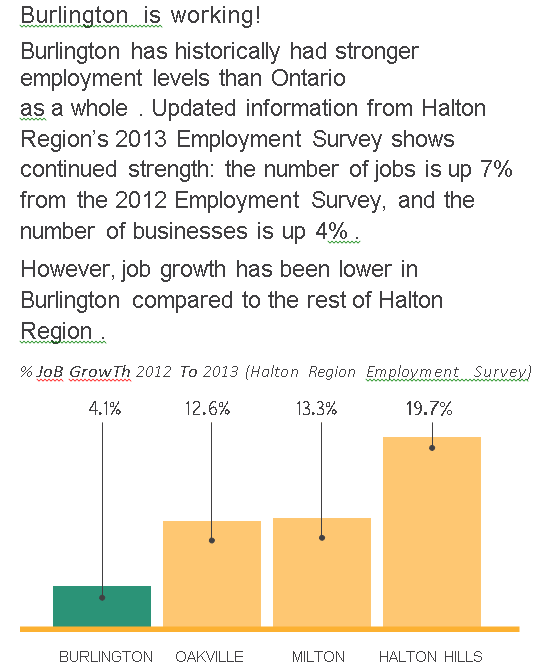
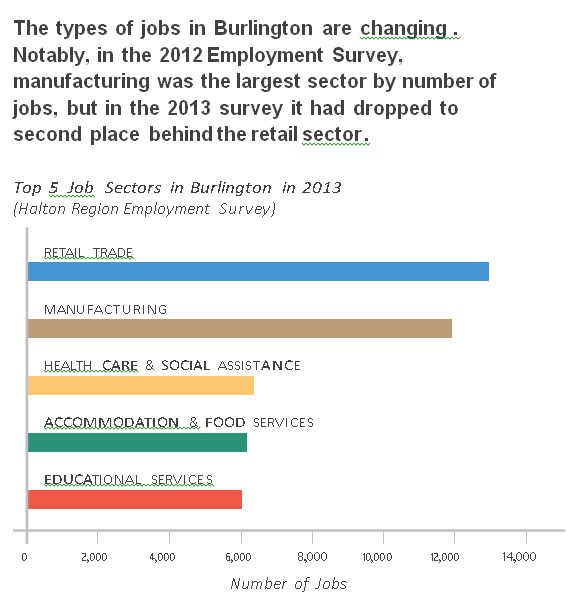
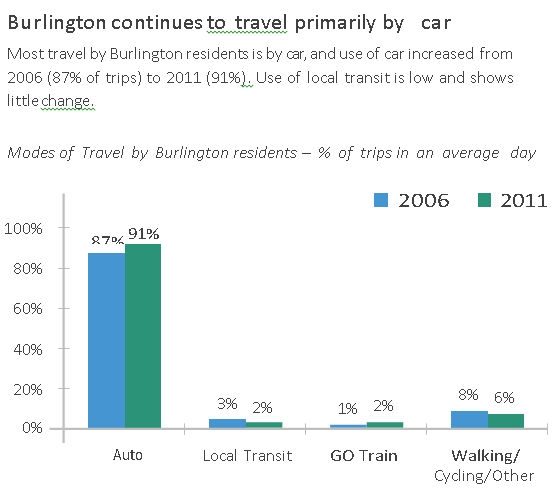
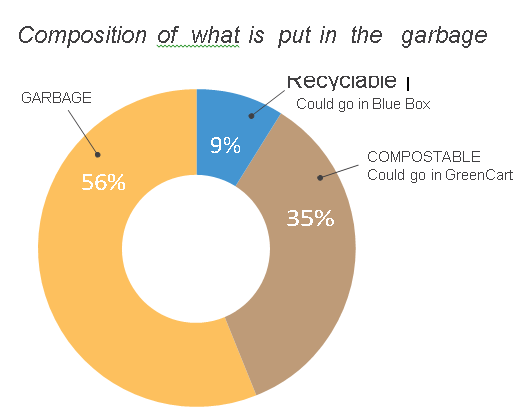
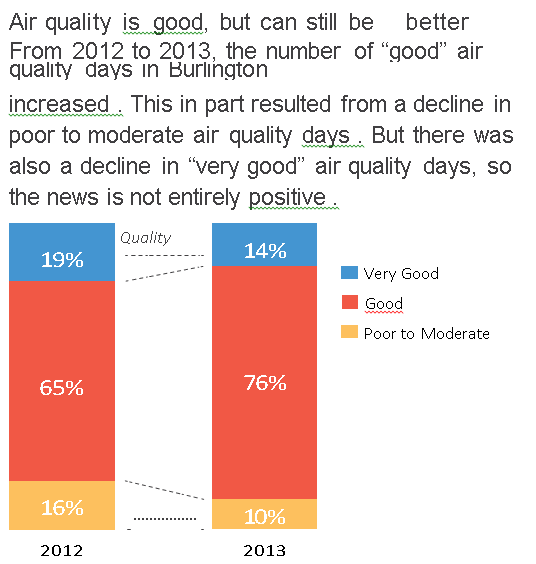
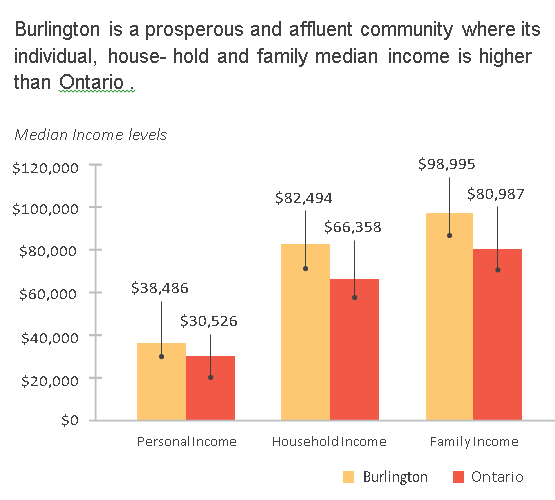
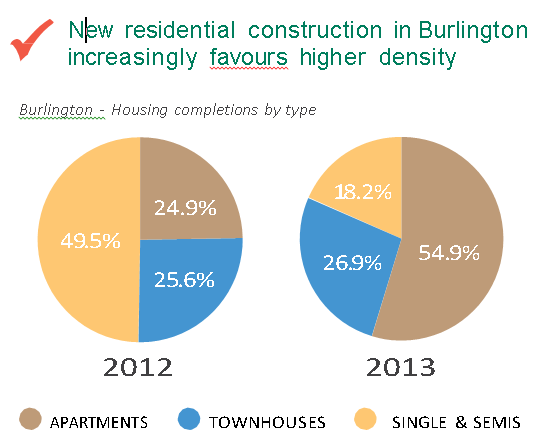
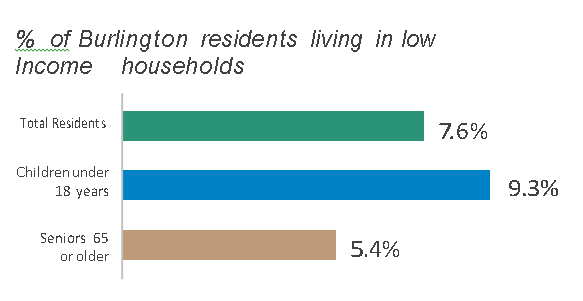
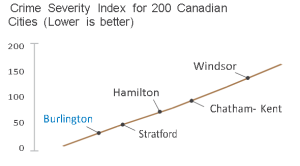
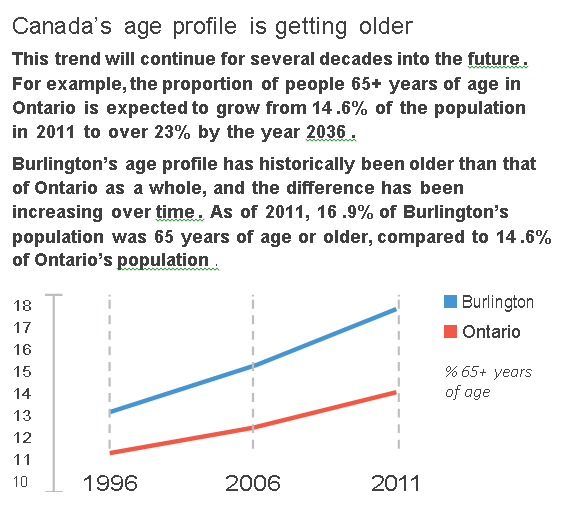


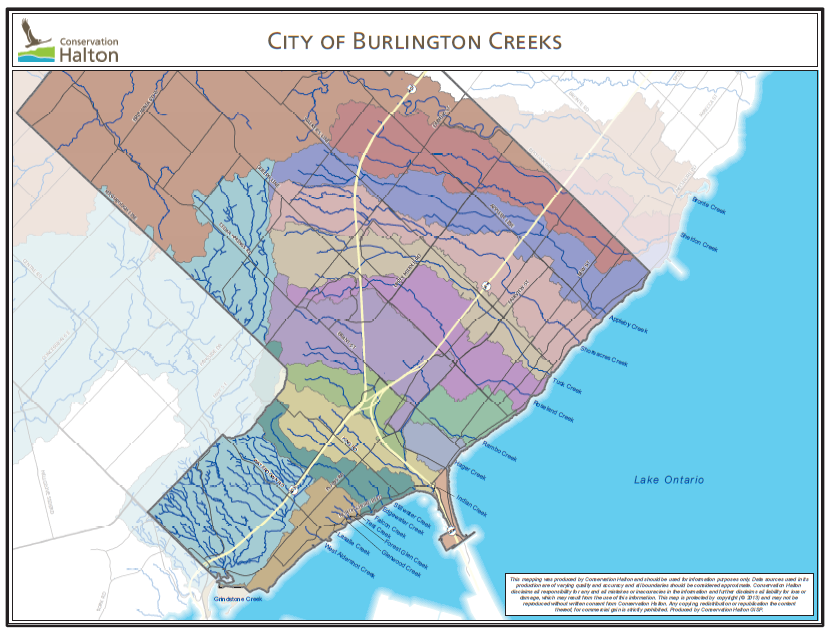
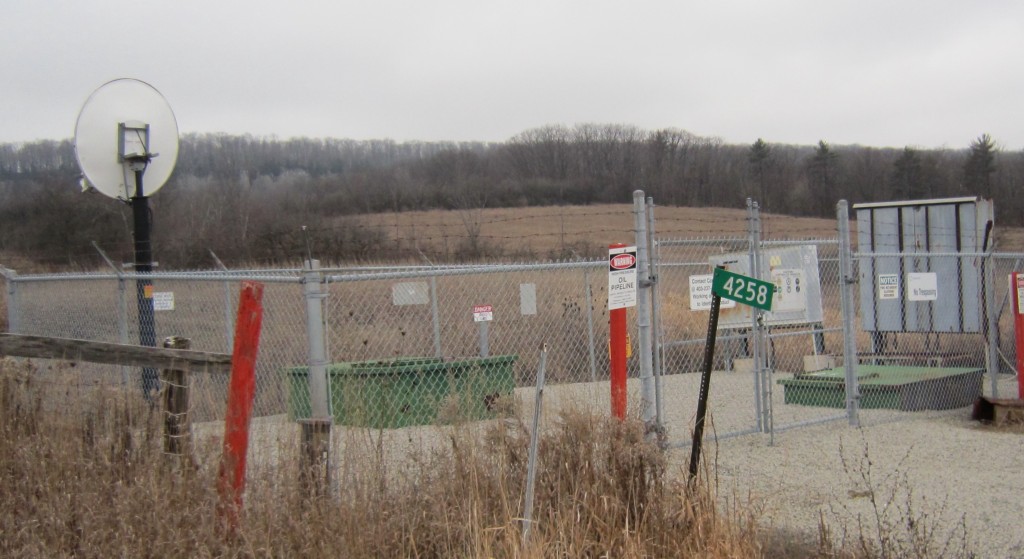
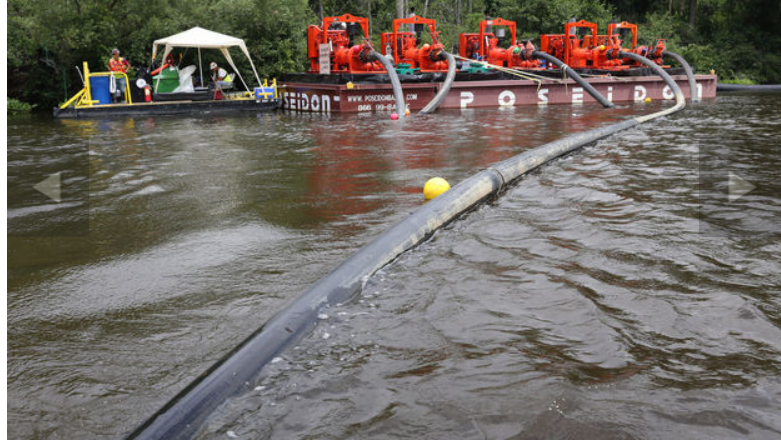

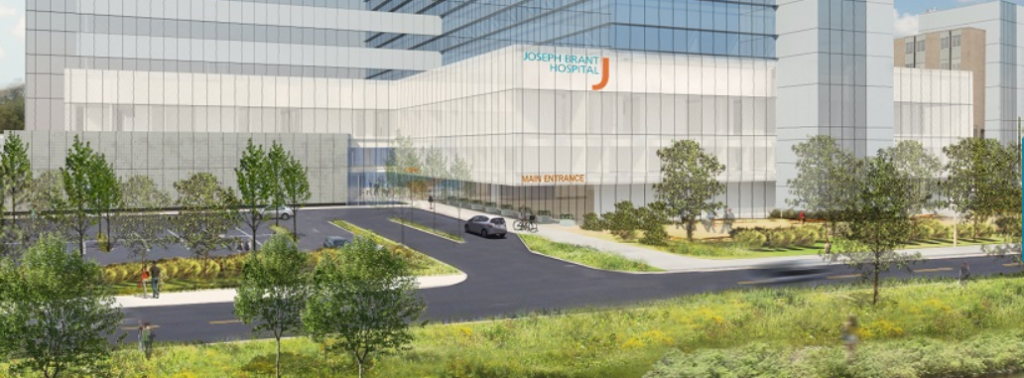
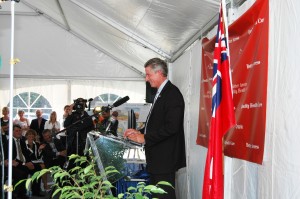


 The Burlington Family Health Team (BFHT) is made up of a team of family physicians, nurse practitioners, registered nurses, social workers, dieticians and other professionals who work together to provide health care for their community. The vision of a Family Health Team is for physicians, nurse practitioners and other health care professionals to practice together, sharing and benefiting from the complementary knowledge and skills of their colleagues.
The Burlington Family Health Team (BFHT) is made up of a team of family physicians, nurse practitioners, registered nurses, social workers, dieticians and other professionals who work together to provide health care for their community. The vision of a Family Health Team is for physicians, nurse practitioners and other health care professionals to practice together, sharing and benefiting from the complementary knowledge and skills of their colleagues. 